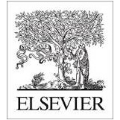In the evolution of sixth-generation (6G) mobile communication networks, satellite-terrestrial integrated networks emerge as a promising paradigm, characterized by their wide coverage and reliable transmission capabilities. By integrating with cloud-based terrestrial mobile communication networks, the limitations of low Earth orbit (LEO) satellites, such as insufficient onboard computing capabilities and limited inter-satellite link capacity, can be addressed. In addition, to efficiently respond to the diverse integrated tasks of communication, remote sensing, and navigation, LEO constellations need to be capable of autonomous networking. To this end, this article presents a satellite-terrestrial integrated fog network for 6G. Its system architecture and key technologies are introduced to achieve flexible collaboration between fog satellites and terrestrial cloud computing centers. In particular, key techniques with diverse challenges and their corresponding solutions are discussed, including integrated waveform design and resource management based on fog satellite onboard processing, as well as mobility management and native artificial intelligence based on cloud-fog collaboration. Finally, future challenges and open issues are outlined.
翻译:暂无翻译



